

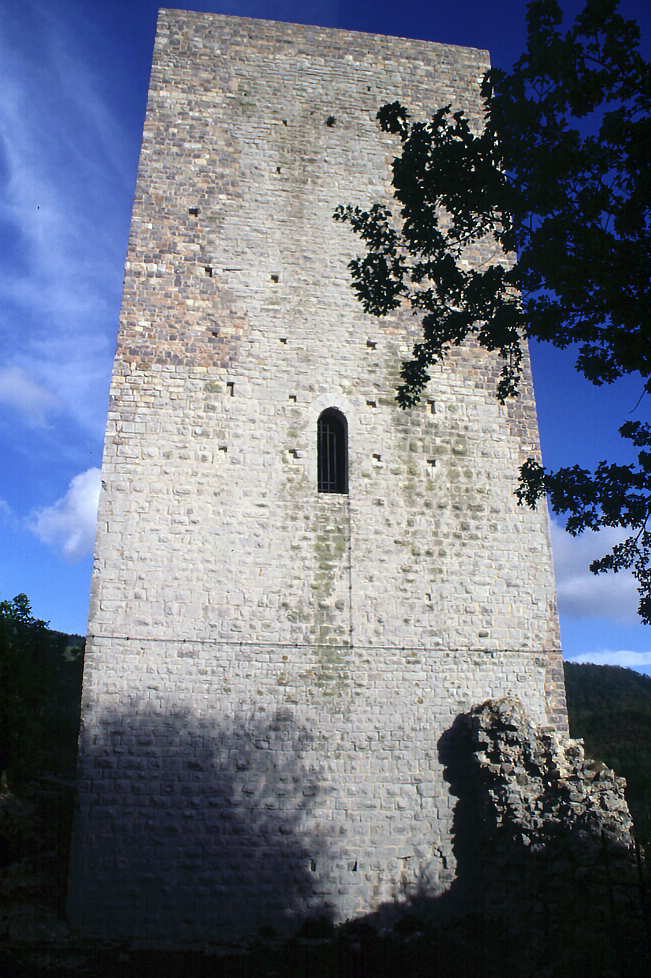






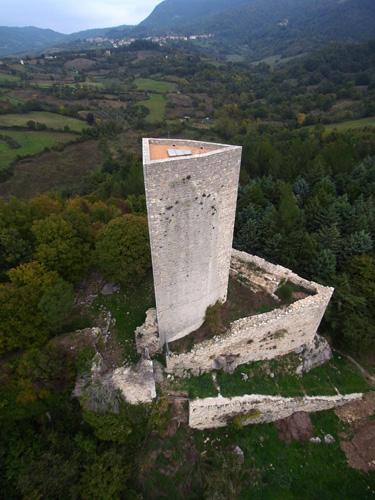
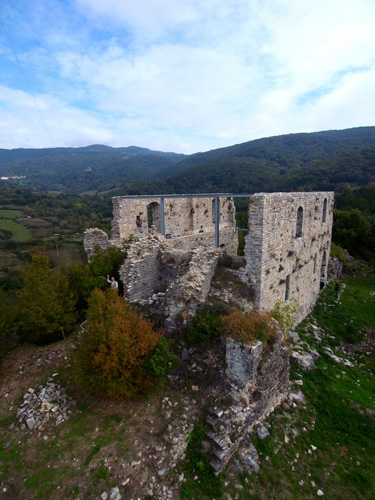
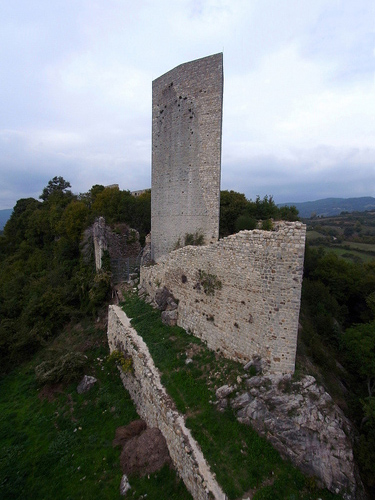
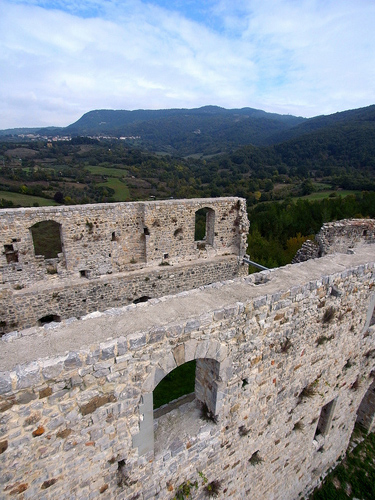















How to reach
The imposing ruins of the Rocca Silvana rise around a kilometer out of the inhabited center of the Selvena country along the road that leads to Sovana. It can be reached following the SS2 Cassia through the Val d'Orcia, the follow up the indications for Abbadia S.Salvatore/Piancastagnaio.
History
Rocca Silvana, aka Rocca Selvena or Roccaccia Selvena, is today in ruins, but in the Middle Age was the most powerful fortification of this area [the Mount Amiata zone], and one of the main castles, surely the richest, belonging to the most important feudal dynasty of the time: the Aldobrandeschi. Its wealth was due to the near mines of cinnabar and mercury excavated since the year 1000 and to its position, crowning a rocky hill about six hundred meters high, with precipices on three sides, overlooking the valley of the river Fiora. All this give to Rocca Silvana the aspect of an impregnable fortress.
The castle was named for the first time in 833 A.D. on a document of the S.Salvatore Abbey but the reports brought to light during the recent excavations, started in 1997, revealed no traces antecedent to the 11th century. At that time the monks of S.Salvatore Abbey began to vindicate the possession of Selvena accusing the Aldobrandeschi to have taken it illegally. The feudal family won the quarrel, but in the following centuries the fortress continued to be object of desire, suffered seriuosly damage under the siege of Fredrick Barbarossa at the mid-13th century and subsequently was again disputed between the powerful towns of Siena and Grosseto. Only at the mid-14th century Siena took control on this territory, but only for few years. Selvena became first part of the fief of Pitigliano, controlled by the Orsini family, and then of the Grand Duchy of Tuscany.
The ruins of the fortress dominate the landscape and today is still easy to recognize the traces of its trapezoidal shaped double walled enclosure: the external walls encircled the inhabited area, the inner walls the feudal palace. To the eastern extremity of the inner walls, just over the main gate, rises a splendid tower with a pentagonal form that played the function of keep (with the look of a ship-prow...). This tower was added to the fortress to increase the defenses immediately after the Barbarossa's siege. The quality of the construction is still today clear, it was built with fine worked stones of the highest quality and testifies the wealth of the castle's owners. This side of the fortification is also the only one not defended by the natural precipices of the rocks and the walls have here their vertex creating a barbican at defense of the entrance.
Just at the side of the tower, in the center of the inner courtyard, rose the remnants of the great feudal palace, one of the finest examples of residential architecture of the 13th century that we can still find in Tuscany outside of the big cities of art. All around we found various traces of other buildings: the cistern and the chapel can be still identified. The complex remained in use up to the whole 17th century and, after the exhaustion of the mines that gave it importance, began a slow decline. Its position, a hardly accessible eagle nest, led to its abandonment. Until the year 1997 it was periluos walking between these ruins covered by vegetation and at continuous risk of collapse. The recent restoration works stabilized the complex. Today Rocca Silvana is visible from the varied perspectives that offers the panoramic road that leads to Sovana.
More info & notes
Rocca Silvana from the drone: